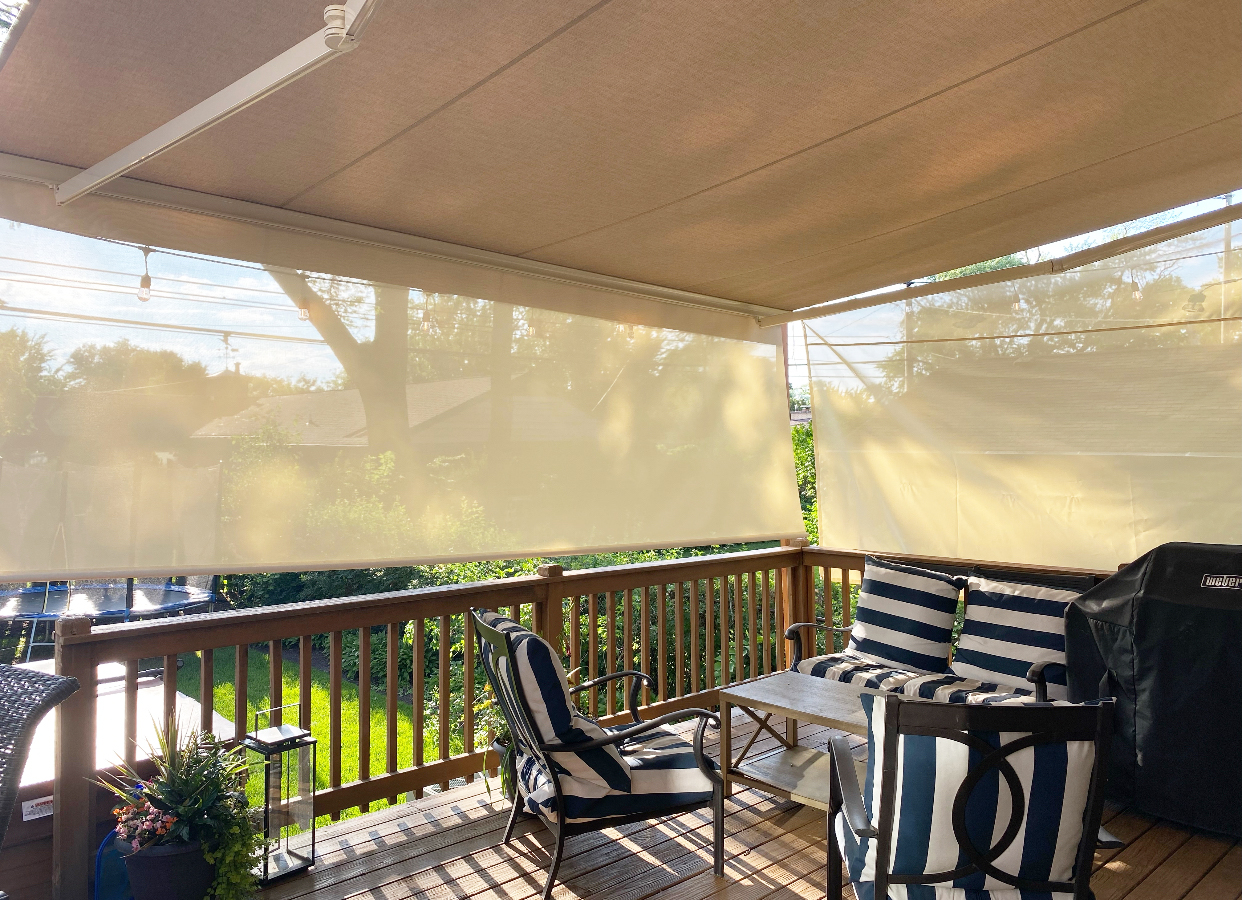- Trim vines, limbs, and shrubbery away from the awning. Do not allow any solid debris (like leaves or twigs) to get retracted in the awning.
- It’s also a good idea to use a spray lubricant on moving parts once a year, but do not get it on the fabric.
- It’s a good practice to fully extend your awning when it’s in use to prevent sagging, which over time could permanently stretch the fabric. Should any part of the frame, mounting, fabric, arm, or roller become damaged, it is important to have it repaired before you resume using it in order to avoid further damage.
- A quick spray with the hose will remove any surface dirt and debris and prevent it from getting ground into the fabric. Use a brush or broom to go over the underside of the awning to remove anything that has become stuck to or lodged in the fabric. NEVER power wash awning fabric!
- Keep your awning retracted during periods of hail, heavy rain, and winds above 20 mph, which may damage the arm and even the fabric. Remember that an awning does not double as an umbrella; it should be retracted during periods of rain. Rainwater that is allowed to pool on the fabric can stretch and damage the fibers, even leaving them permanently misshapen. If your awning has gotten wet, look for an opportunity to allow it to dry out and avoid keeping the wet awning retracted. Even though select awning fabrics, such as the Performance Acrylic and Sunbrella series, are mold and mildew resistant, following these care instructions will ensure your awning continues to look its best.
Caring for Your Awning
Vertical Awnings are maintenance free but there are a few things you can do to extend the life of your awning.

"*" indicates required fields